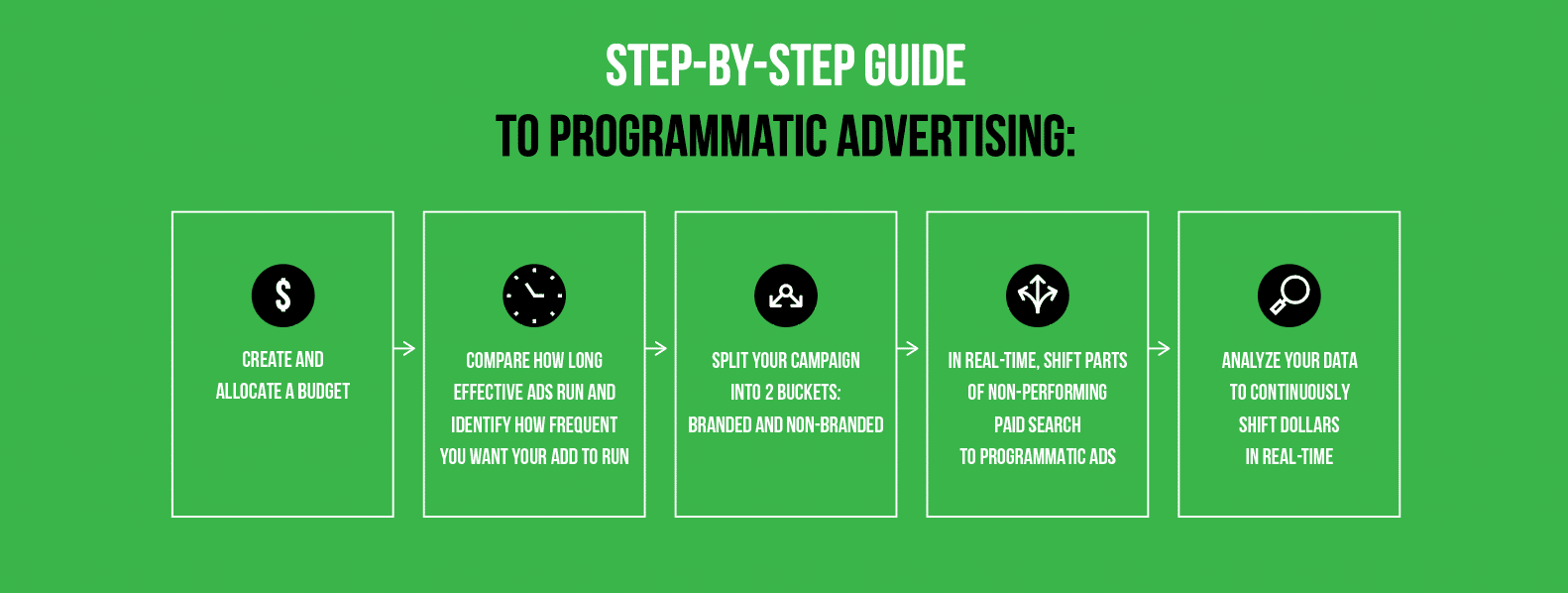Buying Ad Space Digitally

Programmatic advertising is only possible through technology. In media buying, software is used to automate buying of inventory, or ad space, via a bidding system – an exchange where publishers and buyers can directly sell/purchase media inventory while optimization can also be automated. And humans can’t bid with internet space.
At LEAP, we do a lot of targeting to ensure client’s dollars are spent in places that matter to their correct consumer-base. Humans are required to inform the campaign conditions, but the auction-based bid system, or the robotic side, automates and manages the advertiser auction.
How Does Programmatic Advertising Differ from Paid Search?
Programmatic advertising is an algorithmic purchase of advertising space in real time. It is focused on display advertising only while PPC includes a wider range of ad format targeting (shopping, text ads) directly on search engines.
Humans
Before programmatic (and still to this day) humans marketed their brands through traditional and direct advertising, which generally required close human-to-human interaction. Advertising is still actively executed solely through human negotiation and non-digital channels, but technology has opened up the possibility of reaching a massive audience on a large scale with low cost and accurate targeting.
The value of humans in programmatic advertising is in the analysis and insights. While we may now rely on technology to provide the results, we can’t rely on robots to analyze what the numbers and clicks mean, or to determine what was successful and what did not resonate with the right audience, which is critical to improving future campaigns.
At best, the algorithm can suggest bid adjustments or device targeting changes, but it can’t tell us which users are the right audience for our message, or if the amount of money spent resulted in an offline impact. It’s up to the human to set up the strategic thought, analysis technique and campaign structure. The robot merely follows orders given by a human.
Robots
As stated earlier, algorithms determine, in real-time, the most efficient audience and set bids for digital space.
For suppliers, they can set their availability, audience and format of advertising and then the software connects buyers to those placements.
But these steps require a human to input conditions and rules for the campaign to operate under. These AI and Machine Learning algorithms leverage hundreds of factors, databases and behaviors to reach an effective target audience at scale, which does remove the need for substantial human resources.
Though humans could buy the digital space, it would not be as effective, or as successful, than if we relied on technology to inform us which audience, and therefore which space, matters most to consumers.
Humans need to analyze the results, but cannot gather the numbers themselves. We rely on software and automated reported to track who is clicking on the ads, when and then how often they spend on the linked site to inform us what is working.
In truth: There’s no way to accomplish programmatic advertising by only human means. With the popular use of the Internet in the 1990s, advertising changed the way it surfaced in front of consumer. Today, technology has been trained even further to better understand, and even expect, where certain audience will be spending their time and the right messages to attract their attention. But in order to get in front of those consumers, humans have to be the one training the robot.
